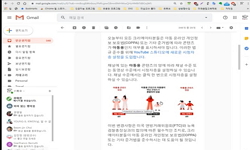The traditional study argues that the ancient Chinese “Qi” which used between the subject and the predicate as modal particle, “Qi” can mean many tone such as speculation, judgment, doubt, rhetorical question, order, request, etc., but a modal...
http://chineseinput.net/에서 pinyin(병음)방식으로 중국어를 변환할 수 있습니다.
변환된 중국어를 복사하여 사용하시면 됩니다.
- 中文 을 입력하시려면 zhongwen을 입력하시고 space를누르시면됩니다.
- 北京 을 입력하시려면 beijing을 입력하시고 space를 누르시면 됩니다.
https://www.riss.kr/link?id=A103232754
- 저자
- 발행기관
- 학술지명
- 권호사항
-
발행연도
2017
-
작성언어
Chinese
- 주제어
-
등재정보
KCI등재
-
자료형태
학술저널
- 발행기관 URL
-
수록면
103-117(15쪽)
-
KCI 피인용횟수
0
- 제공처
-
0
상세조회 -
0
다운로드
부가정보
다국어 초록 (Multilingual Abstract)
The traditional study argues that the ancient Chinese “Qi” which used between the subject and the predicate as modal particle, “Qi” can mean many tone such as speculation, judgment, doubt, rhetorical question, order, request, etc., but a modal particle can mean so many different tone is puzzling. This may indicate that the previous study incorrectly attributes the function of the sentence to the function of “Qi”, although the study is meticulous but does not grasp the core function of “Qi” that used between the subject and the subject. For getting the core function of “Qi” between the subject and the subject, we may need to jump out of the limitations of the sentence and stand in the larger language unit - the perspective of the discourse to research. From the textual structure, ancient Chinese sentences with “Qi” mainly appear in the argument of the proof structure, “Qi” can be called “argument markers”. In a specific context, a clause with “Qi” can be an expression of an argument, or it can be an argument for asking others or themselves to perform their own, or to be skeptical of the argument, or to reinforce the argument. The whole sentence will show the judgment, speculation, doubt, imperatives and other tone, but that is the tone of the sentence, rather than “Qi”. The core function of “Qi” is judgement,this function is evolved from the pronoun function. “Qi” and “Shi” have the same evolution, but “Shi” followed by noun components, which prompted “Shi” evolved to copula, but “Qi” followed by verb component, the noun components and verb compents behind of “Qi” can component subject predicate relation, “Qi” in the syntax is difficult to evolve into a typical copula, but “Qi” in fact have judgement function. From the perspective of discourse structure analysis of textual function words is the new method and the study of function words, need special attention.
목차 (Table of Contents)
- 1. 引言
- 2. “其”的功能描写
- 3. “其”的语法化
- 4. 结论
- 【參考文獻】
- 1. 引言
- 2. “其”的功能描写
- 3. “其”的语法化
- 4. 结论
- 【參考文獻】
- 【中文提要】
- 【Abstract】
참고문헌 (Reference)
1 马建忠, "马氏文通" 商务印书馆 2008
2 马真, "说“也”" (4) : 1982
3 杨树达, "词诠" 中华书局 1979
4 王引之, "经传释词" 岳麓书社 1985
5 郭锡良, "王力先生纪念论文集" 商务印书馆 1990
6 王力, "汉语史稿" 中华书局 1980
7 黎锦熙, "比较文法" 中华书局 1957
8 沈玉成, "左传译文" 中华书局 1981
9 何乐士, "左传虚词研究修订版" 商务印书馆 2004
10 杨逢彬, "对语气副词“其”单功能性质的考察" (1) : 2008
1 马建忠, "马氏文通" 商务印书馆 2008
2 马真, "说“也”" (4) : 1982
3 杨树达, "词诠" 中华书局 1979
4 王引之, "经传释词" 岳麓书社 1985
5 郭锡良, "王力先生纪念论文集" 商务印书馆 1990
6 王力, "汉语史稿" 中华书局 1980
7 黎锦熙, "比较文法" 中华书局 1957
8 沈玉成, "左传译文" 中华书局 1981
9 何乐士, "左传虚词研究修订版" 商务印书馆 2004
10 杨逢彬, "对语气副词“其”单功能性质的考察" (1) : 2008
11 杨伯峻, "古代汉语虚词" 中华书局 1981
12 王力, "古代汉语" 中华书局 2014
13 郭锡良, "古代汉语" 商务印书馆 2014
14 郭锡良, "先秦语气词新探(一)" (1) : 1988
동일학술지(권/호) 다른 논문
-
- 한국중어중문학회
- 예추이화(Ye Cui Hua)
- 2017
- KCI등재
-
- 한국중어중문학회
- 홍준형(Hong, junhyong)
- 2017
- KCI등재
-
- 한국중어중문학회
- 조보로(Zaho, Baolu)
- 2017
- KCI등재
-
출토문헌(出土文獻)에 나타난 병명(病名) ‘가(瘕)’에 관한 고찰
- 한국중어중문학회
- 이경(Lee, Kyung)
- 2017
- KCI등재
분석정보
인용정보 인용지수 설명보기
학술지 이력
| 연월일 | 이력구분 | 이력상세 | 등재구분 |
|---|---|---|---|
| 2027 | 평가예정 | 재인증평가 신청대상 (재인증) | |
| 2021-01-01 | 평가 | 등재학술지 유지 (재인증) |  |
| 2018-01-01 | 평가 | 등재학술지 유지 (등재유지) |  |
| 2015-01-01 | 평가 | 등재학술지 유지 (등재유지) |  |
| 2013-05-21 | 학회명변경 | 한글명 : 변화없음 -> 한국중어중문학회영문명 : Korea Association of Chinese Language And Literature -> 미등록 |  |
| 2013-05-21 | 학회명변경 | 한글명 : 한국중어중문학회 -> 변화없음영문명 : The Chinese Language And Literature Society Of Korea -> Korea Association of Chinese Language And Literature |  |
| 2013-05-21 | 학술지명변경 | 외국어명 : The Journal of Chinese Language and Literature -> Korea Journal of Chinese Language and Literature |  |
| 2011-01-01 | 평가 | 등재학술지 유지 (등재유지) |  |
| 2009-01-01 | 평가 | 등재학술지 유지 (등재유지) |  |
| 2007-01-01 | 평가 | 등재학술지 유지 (등재유지) |  |
| 2005-01-01 | 평가 | 등재학술지 유지 (등재유지) |  |
| 2002-01-01 | 평가 | 등재학술지 선정 (등재후보2차) |  |
| 1999-01-01 | 평가 | 등재후보학술지 선정 (신규평가) |  |
학술지 인용정보
| 기준연도 | WOS-KCI 통합IF(2년) | KCIF(2년) | KCIF(3년) |
|---|---|---|---|
| 2016 | 0.32 | 0.32 | 0.26 |
| KCIF(4년) | KCIF(5년) | 중심성지수(3년) | 즉시성지수 |
| 0.26 | 0.22 | 0.575 | 0.12 |





 DBpia
DBpia






